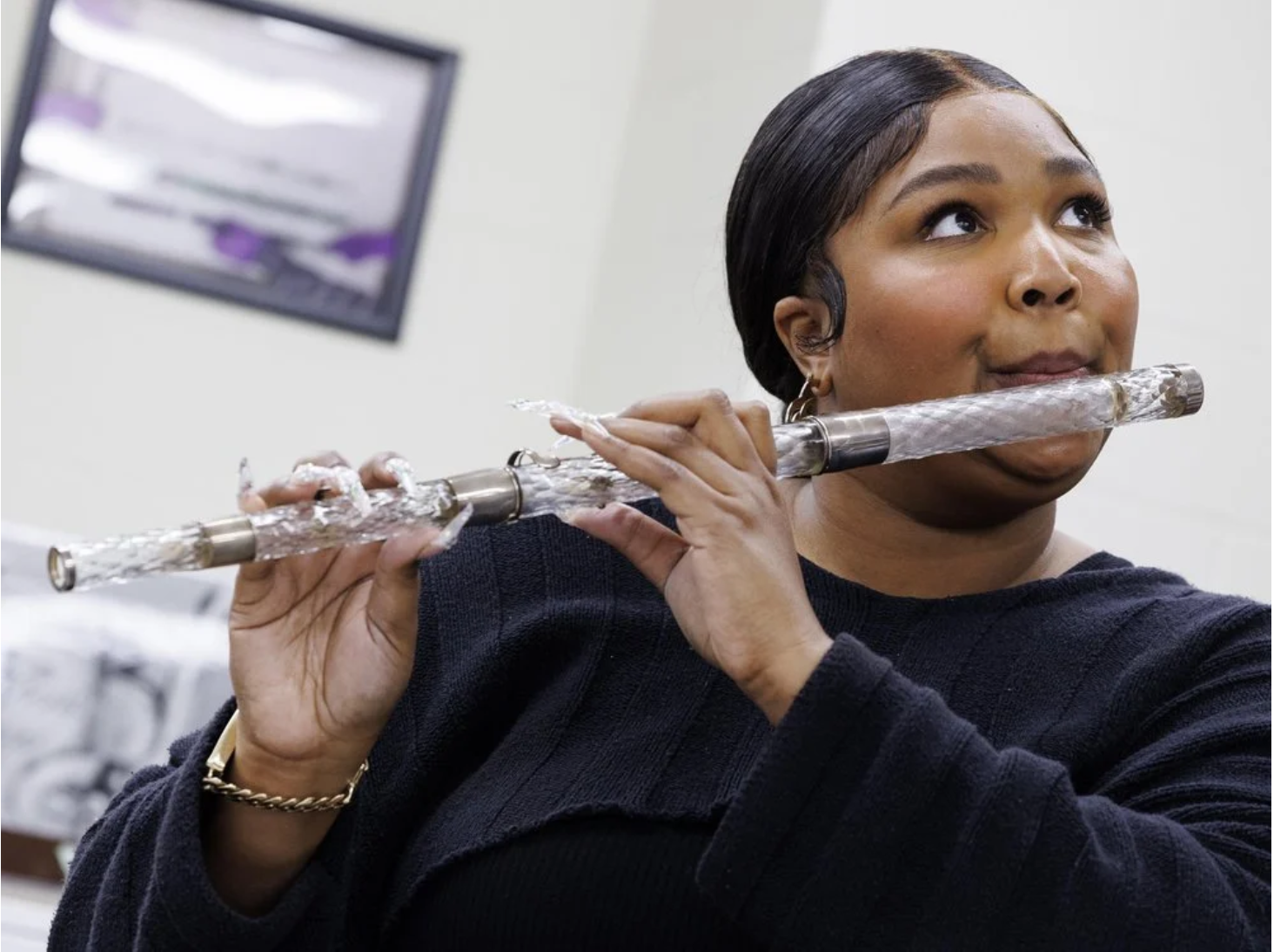Can we, as collections specialists, learn to accept that some objects need to continue to live their lives?
This week, pop artist Lizzo received a lot of attention for playing a 200-year-old crystal flute once owned by James Madison. The Library of Congress offered Lizzo the chance to play the flute when she arrived in Washington, D.C. for her performance. Classically trained Lizzo toured the collection prior to performing and later played the flute on stage to make history as the “first person to ever play the flute”. A team from the Library of Congress escorted the flute to the venue and directly into the pro’s deft hands on stage. It was historic, and it was fun.
Similarly (?), in June of this year, celebrity personality Kim Kardashian wore a dress designed for Marilyn Monroe for the famed Met Gala. In this case, she wore the iconic object bought by Ripley’s Believe It or Not! in 2016 for $4.8 million only to walk the red carpet and then change into a replica. Reports suggest that the dress did not fit Kardashian and that the piece suffered significant damage from the event. Ripley’s claims it went to great measures to protect it.
This provokes an interesting debate: when should objects get a recess from their hermetically sealed homes? When should we allow them to continue being the functional object they are?
The diplomatic and frustratingly correct answer 100% of the time is “it depends”. In the case of the flute, the mandate of the Library of Congress is to keep the objects functional. Additionally, they offered the flute to her to play. In the case of Kardashian, it appears that she sought out the Monroe dress for the event. Doubtless that in both cases numerous authorities signed off on the usage of the collection with the understanding of the range of possibilities that could occur.
Collection owners constantly refer to the “algorithm” that weighs object intent, object preservation, object condition, context and goal of the ‘outing’, responsibility as an owner, and future use/accessibility/care of the object.
Understandably, we may all draw different conclusions with this algorithm. In the case of loaning the flute to Lizzo, she actively engaged thousands of people in a show as well as many more online in the history of the object and in the Library of Congress. It also started a reprehensible political debate (whose flames I refuse to fan via a link). A debate about preservation could ensue, but one must think that the Library of Congress calculated the risk and made a highly considered decision. Not only does Lizzo know her way around a flute, but they mitigated the risk through experts and escorts. They, however, gain generally positive optics, spur an interest in history, and generate a broader understanding of the Library of Congress. They did not have to pay a PR company for this either.
The Kim Kardashian dress debacle makes less sense on some level, but also, on some level it remains a dress. One wears dresses. Still, the dress should at least fit, and one should mitigate risks. To some degree they did by only allowing her to wear it momentarily and supervising her every interaction with it. We argue whether she should wear it at all. That argument ultimately hinges on the historical value of the object and the merits of the one wearing it. It is a mobius strip of an argument.
As a case study, can we argue, also, that selling an important historical document to a private collector has similar attributes? The frequency of this transaction has numbed us to the polemic. In this case, the object no longer adheres to its intent nor is the new owner necessarily a professional who might deal with the historic artifacts. They collect it for various reasons and most of them probably well intended. They can handle the object now, display it in harmful conditions, and deny access to the public. Of course, they may also protect and admire it from within well-resourced confines. It can, likewise, disappear forever. No one protests auction houses and dealers over this, though (repatriation aside).
I try to make the point that objects have lives too and that sometimes they have to live them. Someone has to decide when, and in the world of preservation, we spin these plates hopefully to preserve and educate at the same time. If ultimate preservation is a dark, climatized room that no one ever enters, then it essentially no longer exists. Allowing access to the public in some form and even using them as intended will promote deterioration but also education. We accept the finite nature of things; that access and education have a cost.



